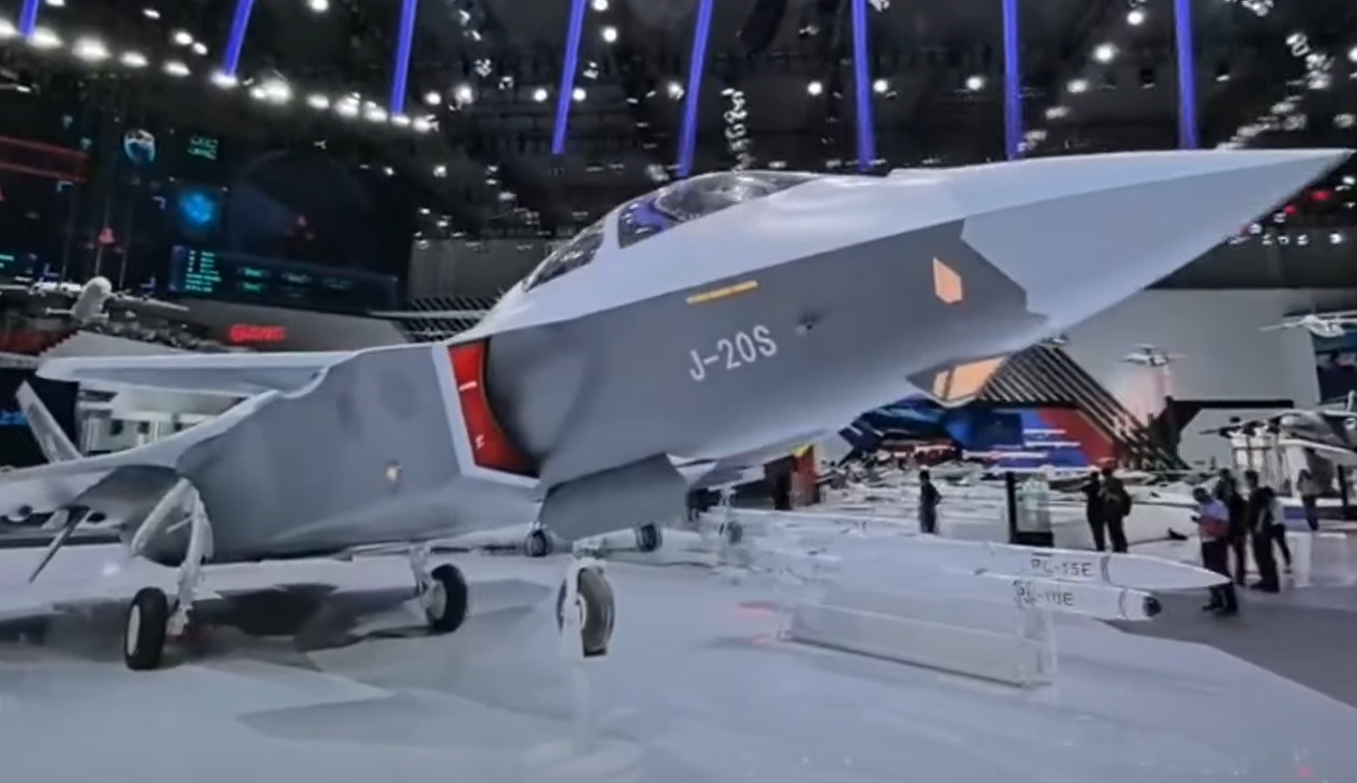The People’s Liberation Army Air Force (PLAAF) has officially inducted a twin-seat variant of its fifth-generation stealth fighter jet, the J-20, marking a significant evolution in China’s air combat capabilities.
Known as the J-20S, this new configuration introduces a second crew member, the weapon systems officer, alongside the pilot, enabling enhanced mission versatility and endurance.
The J-20S first surfaced publicly in October 2021, but after years of speculation, its formal deployment signals a new phase in China’s aerial defense strategy.
Analysts believe the introduction of a twin-seat variant stems from operational needs, particularly for long-duration missions, despite the J-20’s already advanced automation and display systems. The additional crew member is expected to ease pilot fatigue and manage complex combat tasks more effectively.
The newly introduced J-20S aircraft has been deployed with the 172nd Air Brigade under the PLAAF’s Flight Training Base in Cangzhou, Hebei Province. This brigade performs both combat reserve and pilot training roles and was among the first units to receive J-20s back in February 2018.
Experts suggest that the J-20S requires a unique operational doctrine, prompting its initial assignment to this versatile brigade.
Beyond traditional air combat, the J-20S is anticipated to serve multiple futuristic roles. These include acting as a command platform for loyal wingman drones, such as the under-development “Dark Sword” UAV, and potentially being modified for electronic attack or airborne command and control missions.
Military analysts stress that the J-20S is not merely a trainer but a full-fledged frontline combat aircraft. According to Abraham Abrams, author of China’s Stealth Fighter: The J-20 ‘Mighty Dragon’ and the Growing Challenge to Western Air Dominance, the shift toward twin-seat platforms echoes China’s transition with its Flanker fighters in the late 2010s.
He notes that official artwork preceding the J-20S unveiling depicted only twin-seat versions, hinting at the development of dedicated J-20S squadrons, similar to the J-16.
Abrams further speculates that the J-20S platform could eventually branch into multiple variants, including strike and electronic warfare versions, much like how Soviet and later Russian Su-27 twin-seaters evolved into interceptors and AWACS aircraft.
While the long-term roadmap for the J-20S remains unclear, military observers agree that the PLAAF is acquiring the J-20 at a larger scale than any other fifth-generation platform worldwide, suggesting the J-20S may see production rates surpassing other twin-seat stealth fighters globally.
The debut of the J-20S underscores China’s ambition not only to match but potentially exceed the West’s fifth-generation air capabilities, ushering in a new era of stealth warfare, crew coordination, and unmanned teaming operations.


